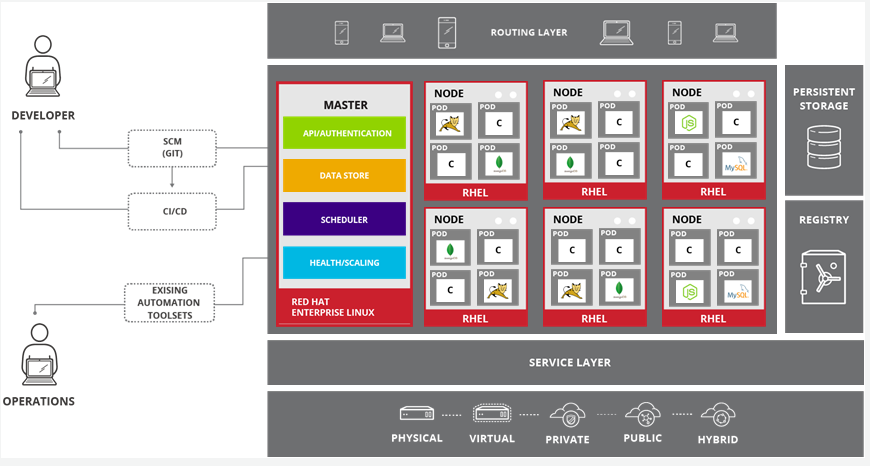openshift
This is an old revision of the document!
Table of Contents
Workflow comparisson Virtual vs. PAAS
Physical
| Virtual
| PAAS
|
OpenSHift Architecture
- Only x86 platforms supported
- OpenShift runs on either RHEL or Red Hat Enterprise Atomic Host
- Nodes are instances of RHEL 7 or Red Hat Atomic Host with OpenShift installed
- Nodes are orchestrated by masters
- Hybrid approach supports deploying OpenShift instances across all of these infrastructures
- OpenShift is supported anywhere that Red Hat Enterprise Linux is
| Scheduler | Determines placement of new pods onto nodes within OpenShift cluster. Select best-fit node
|
| Replication Controller | Ensures that specified number of pod replicas running at all times. Adds or deletes pods according to life signs. |
| OpenShift Networking |
Scenario: External client points browser to myApp.cloudapps.ml.opentlc.com:80
Scenario: Pod transmits packet to pod in another node host in OpenShift environment
|
| Route | Exposes service by giving it externally reachable hostname (FQDN). |
| Router |
|
| Services |
|
| XXX |
Container Deployment Workflow
Scenario: New application requested via CLI, web console, or API
OpenShift API/authentication layer:
- Approves request, considering user’s permissions, resource quotas, and other information
- Creates supporting resources: deployment configuration, replication controllers, services, routes, and persistent storage claims
OpenShift scheduling layer:
- Designates node host for each pod, considering resources' availability and load and application spread between nodes for application high availability
OpenShift node:
- Pulls down image to be used from external or integrated registry
- Starts container (pod) on node
OpenSHift UX
OpenShift CICD
API
# list pods oc get pod
openshift.1519208023.txt.gz · Last modified: (external edit)

